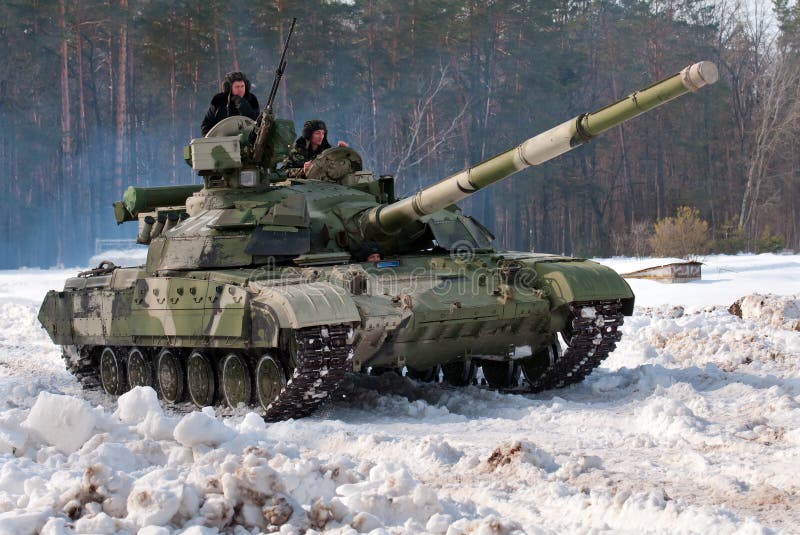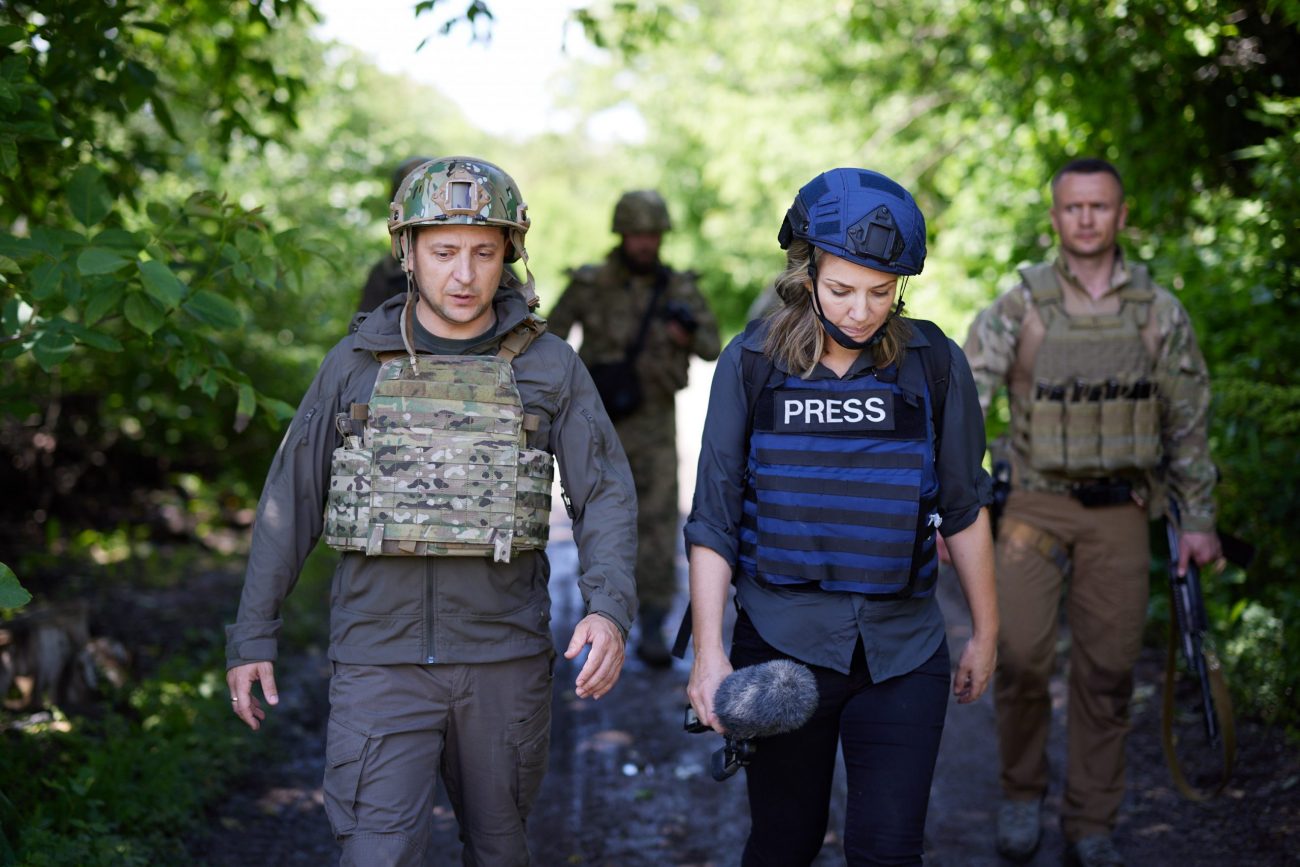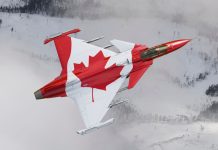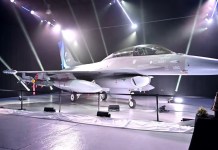As the focus of the ongoing war shifted towards eastern Ukraine, a very rare old T-64BM ‘Bulat’ Ukrainian tank was found in the Donbas region.
‘Made In Russia, Recycled In Ukraine’ — Putin’s Best Fighter Bombers Are Being Sold As Souvenirs In Ukraine
The abandoned T-64BM appeared in a video that began circulating on social media on April 23. The 40-ton tank with its reactive armor and 125-millimeter main gun appear mostly to be intact.
Our apologies, we were going by inaccurate information. This video was in fact operated by UA, not captured by Russian forces. Thank you @Yuriy93082962.https://t.co/9bSU8EHLZ9
— ?? Ukraine Weapons Tracker (@UAWeapons) April 23, 2022
While reports suggest that the Russian-backed forces in eastern Ukraine captured it, certain sources monitoring the equipment losses in the war have said that the Ukrainian Armed Forces filmed the video.
The T-64BM ‘Bulat’
The T-64BM is an upgraded version of the aging Soviet T-64B main battle tanks inherited by Ukraine from the Soviet Union. It was redesigned by the Morozov Machine Design Bureau of Kharkiv.
The upgraded Bulat tanks featured more powerful weapons, improved mobility performance, and higher protection levels. First vehicles were upgraded and delivered to Ukrainian Army units in 2005.
The tank’s main armament is a fully stabilized 125 mm smooth-bore gun fitted with an automatic loader. It can fire sub-caliber kinetic energy or shaped-charge projectiles, HEAT (high explosive anti-tank), and HE-FRAG (high explosive fragmentation) rounds. The maximum effective range of these rounds is said to be 2500 m in the daytime and up to 1500 m at night.
The gun can also fire the 9K119 Svir – Western reporting name AT-11 Sniper – anti-tank guided missiles (ATGMs) that are reported to have a 90% hit probability at 4000 m range and 80% hit probability at a maximum range of 5000 m.

A T-64BM can carry a total of 36 rounds for the main gun, including the anti-tank guided missiles, of which 28 rounds are placed in the automatic loader, with the remainder being stored at the driver’s station and in the fighting compartment.
While the secondary armament consists of a coaxial 7.62 mm machine gun mounted to the right of the main armament and a remotely operated 12.7 mm anti-aircraft machine gun mounted to the right of the roof turret. The anti-aircraft gun has a load of 300 ready-to-fire rounds and is capable of engaging aerial targets out to 1500 m and ground targets out to 2000 m.
The T-64BM Bulat is powered by a 5TDFM diesel engine which produces 850 hp. It is an upgraded version of the previous 5TDF; however, the upgrades also increased the weight of the tank, thereby demanding more engine power.
T-64BM is slow compared to most modern tanks due to its low power-to-weight ratio. Therefore, it was proposed to be fitted with a more powerful 6TD diesel that can produce 1000 hp.
The protection of the tank was improved by installing the add-on passive and Explosive Reactive Armor (ERA) at the front of the hull and turret. The T-64BM is fitted with the Ukrainian Nozh modular ERA. The vehicle is also fitted with NBC (nuclear, biological, and chemical) protection and automatic fire suppression systems.
Among other upgrades, the Bulat tanks are fitted with a new fire control system which also includes one 1G46 rangefinder sight, optoelectronic television, and thermal imaging night sight TO1-K01E.

Additionally, the tank can disguise itself on the battlefield by laying a thermal effects protective smokescreen and a smokescreen generated by the TUCHA smoke discharging system, which comprises eight 3D6 smoke grenades launchers and collective control panel.
The smoke grenade launchers are mounted externally on the front turret, arranged in six on either side of the gun.
Problems With Performance
The T-64BMs were widely fielded by the Ukrainian army during the 2014 military conflict against the Russian-backed separatist forces in east Ukraine but later disappeared from the frontline for unknown reasons.
Most reports suggest that there were problems with its performance and therefore they had to be moved to storage.
For example, the Latvian media reports covering the conflict noted strange, uncharacteristic damages on T-64BMs’ hulls with their top turrets tearing away. The damage was often observed along welding seams of the hull, while the rest of the armor plates were left out bent, suggesting the poor manufacturing quality.
The Latvian media also reported that these damages were found on the tanks that the factory in Kharkiv produced, whereas the same T-64 tanks that were made during the Soviet Union and were used in many battles never had their hulls torn to pieces.
Meanwhile, David Axe, an American military commentator, has reported that the Ukrainian army was unhappy with the explosive reactive armor of the Bulat tanks.
Two of the active tank brigades and 11 other active heavy brigades of Ukraine’s army are known to use T-64BVs, while reserve brigades mostly have T-72s.

The T-64BV is a much older variant of the T-64 B whose production started in 1985. Comparatively, the T-64BM is more advanced, but still, the Ukrainian Army largely relies on the aging T-64BV tanks.
In late 2021, the Ukrainian armor corps was reported as having 410 old T-64BVs, 210 modernized T-64BV version 2017, 100 T-64BM Bulats and around 130 T-72s.
That said, the appearance of the T-64BM on the battlefield may indicate that Ukraine’s requirement of tanks is not being fulfilled even with the additional ex-Russian tanks and foreign models donated by Kiev’s partners.
- Written by Tanmay Kadam/EurAsian Times Desk
- Contact the author at etdesk@eurasiantimes.com
- Follow EurAsian Times on Google News




